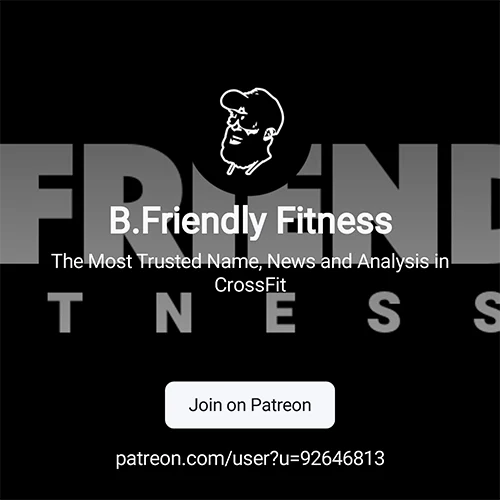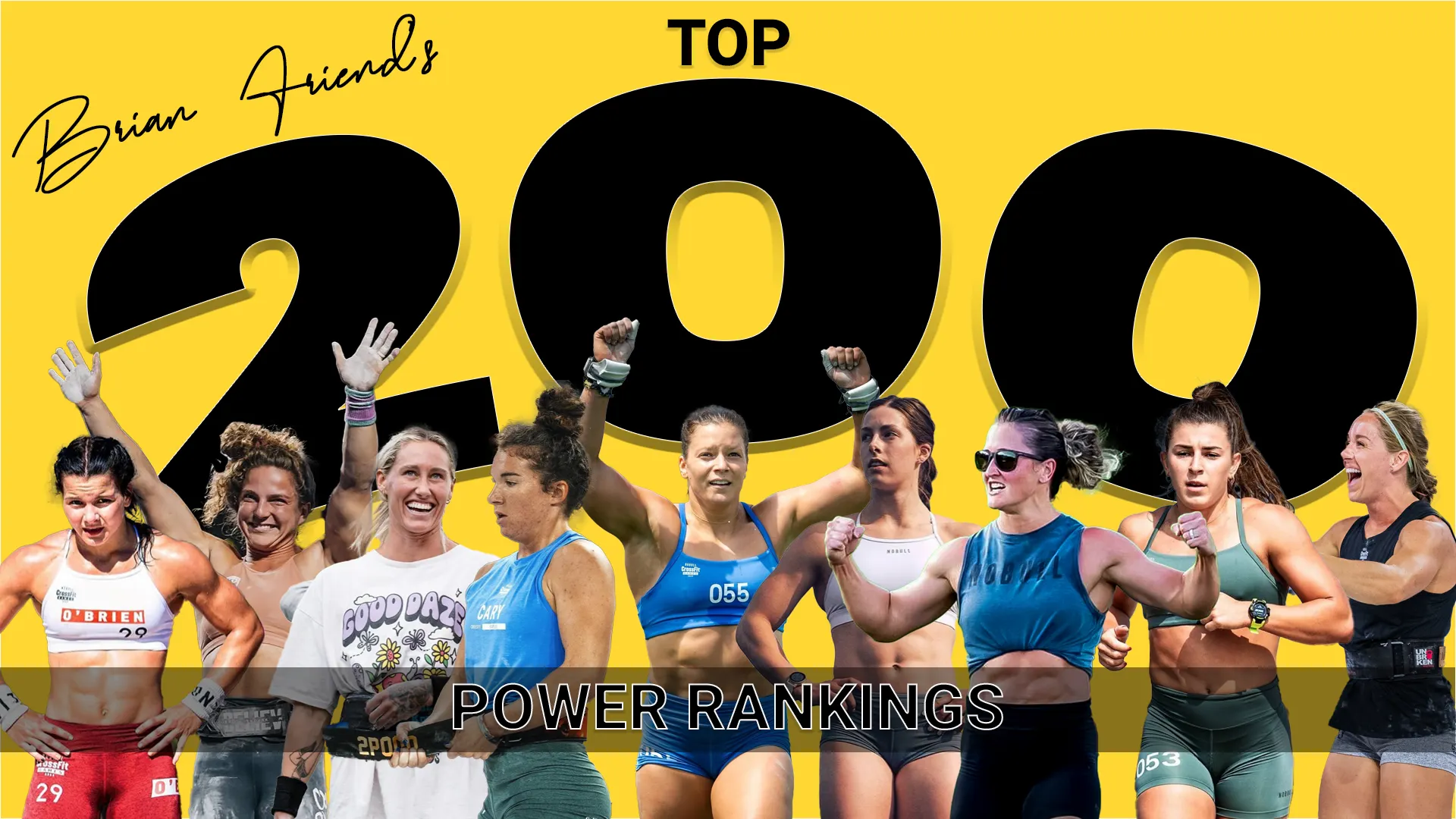Image Credit: Athlete's Eye
In a surprise move CrossFit Games Instagram released the team workouts for Semifinals Monday evening. (Most were expecting all the programming for both teams and individuals to be announced Thursday, one week before the start of week one of the Semifinals).
After spending some time looking them over and thinking about each test, and the test as a whole, I decided there was only one way to evaluate them, a good old fashioned ‘pros and cons’ list…
Pro: They were released earlier than expected. Some might not be a fan of that, but I am because…
Con: These are not the easiest workouts to digest (and there are still quite a few unanswered questions, which I like…)
Pro: We don’t have all the details yet. We’ll get to some of these a little further on, but releasing most of the information, while withholding some critical details is a tactic that can be effective too.
Con: Six tests. Now, while I’m more comfortable with six team tests than I am six individual tests…I’m concerned this means we will only get six individual tests as well, and I think seven makes the competition so much better, especially with the depth of field and how competitive the cut lines are going to be. Still holding my breath for seven for individuals.
Pro: There is a worm. There are dozens of ways to test teamwork, communication, and synchronization… but none of those combine them all as well as the worm. The totality of the test (Open to Games) can only have it in the live stages. I’d say it’s parallel to having an individual CrossFit competition with no barbell, only we have seen that before (2017 Regional), but all the other stages had a barbell.
Con: I’m not sure how critical the worm is. During a 28 minute workout (test 1) the team will have to do 4 sets of 10 worm clean and jerks. Presume a set of 10 takes them even 75 seconds, that’s 5:00, or about 18% of the working time allotted. Meanwhile in test 6 there are worm burpees and worm squats which should account for a majority of the working time…unless you have one team member who gets stopped dead in his or her tracks on a gymnastics movement. It won’t happen to the best, but it will happen for some, and in this regard the worm is not the limiting factor in either workout.
Pro: We are running. Twice. Running, and I don’t mean shuttle runs, is a backbone element of fitness- functional, competitive, or otherwise, love that every team member has to do it twice.
Con: We don’t know where they’ll be running. Hopefully at least one of them (I’m thinking the relay) is not on a machine of any kind AND does not require any stopping to change direction.
Pro: We get a variety of different testing formats:
- Test 1: All four athletes work simultaneously but on different things, then come together for synchronized worm work.
- Test 2: Alternating Male/Female pairs in a mostly balance, though ascending, work to rest format.
- Test 3: Relay with a forced order of F-M-F-M (*note the format is not perfectly clear in its presentation, which leaves a little room for suspense, but we are assuming one athlete works at a time).
- Test 4: Five rounds for time in Male/Female pairs. More of a fixed time domain per round as compared to the ascending work and rest time in test 2.
- Test 5: In Male/Male and Female/Female pairs, a lifting contest at three different weights with twice as much rest as work. (**Again, not 100% sure on format here based on how it’s written, but assuming one barbell at each station for each pair).
- Test 6: Four rounds of worm work with three rounds of high skill gymnastics in between them
Con: Seems to be more two and one person work being done than all four accomplishing something at the same time. Some of the coolest visuals, and demanding elements of the test, in the team competitions are the four person synchro barbell or gymnastics work, which we’re lacking entirely here.
Pro: There are certainly logistical constraints of running the same competition in seven different locations over three weekends in six continents. Despite that, the programming team has managed to test many different facets of fitness in creative ways.
- You have to be strong under fatigue, as opposed to an isolated heavy lift test.
- Everyone on the team has to execute high level gymnastics skills.
- There are opportunities for strategy (order on tests 1 and 4 in particular)
Con: I’m concerned with the viewability of some of these tests. Five of the six tests last 15 minutes or longer, on several of the tests the floor will be filled with equipment, and as teams get spread out over the course of some of those long tests it will be difficult at times to know who is in which round. This will put a great demand on the broadcast to have a well thought out plan if the races are going to be told to audiences around the world.
Pro: The women’s weights are heavy! For a few years now it’s seemed obvious that women have increased their strength capacity at a faster rate than men since CrossFit began. This makes sense because most men lifted weights for decades before then, while women have adapted weightlifting much more so in the last 20 years.
Con: The increased weights for women are in the heavy lifting event, as opposed to a lightweight barbell cycling workout. When workouts call for 65/95 and 95/135, women seem to be outperforming similarly fit men all the time. Would have loved to see the increase in weight start with something lighter (like the thrusters at 70 or 75 lbs in test 2).
Pro: Heavy Dumbbells. Test 3 in general is one I’m curious to see, I feel like when I watch it I’ll enjoy it more than what I’m envisioning at first. Lowlands had a relay at their Semifinal last year, and I think there are some lessons CrossFit can learn from that. We’ll see if they’ve been doing their homework. Either way, the heavy dumbbells are a clever test of strength woven in to this MWGG test each individual athlete must complete some version of, I’m just curious to see if it is a hindrance for anyone at all.
Con: Would have loved to see an Invictus athlete as one of the images chosen rather than Tim Paulson. I love Tim, but in the same way I’m glad to see Lena Richter of CrossFit Oslo (last year’s second place team), I would have loved to see someone from Invictus (last year’s third place team) in a promo like this.
Pro: Overall, I love the images being included next to the tests. Highlighting some of the top athletes in the team division in this way is a nice touch.
General Thoughts: All of these observations are without sleeping on the workouts at all. There seems to be some really fun, cool, and challenging elements to the tests. There are also things that I’m not entirely sure about- this however, almost always happens when I first see a slate of programming. My advice to myself, and to anyone else, is feel free to evaluate and offer an opinion, but, understand that you still need to observe with neutral eyes. Watch what happens. Don’t look for “I told you so’s” or “I knew it” just to pad your own ego. Let the entire competition play out, then evaluate. There is always something you thought would be great that flops, and something you thought would be problematic that shines.
And as Dave Castro used to say, and many others have said since, it’s the athlete’s that make the test; so let’s let them do just that, and save any excessively critical judgment until afterwards.





What do you think?
Show comments / Leave a comment